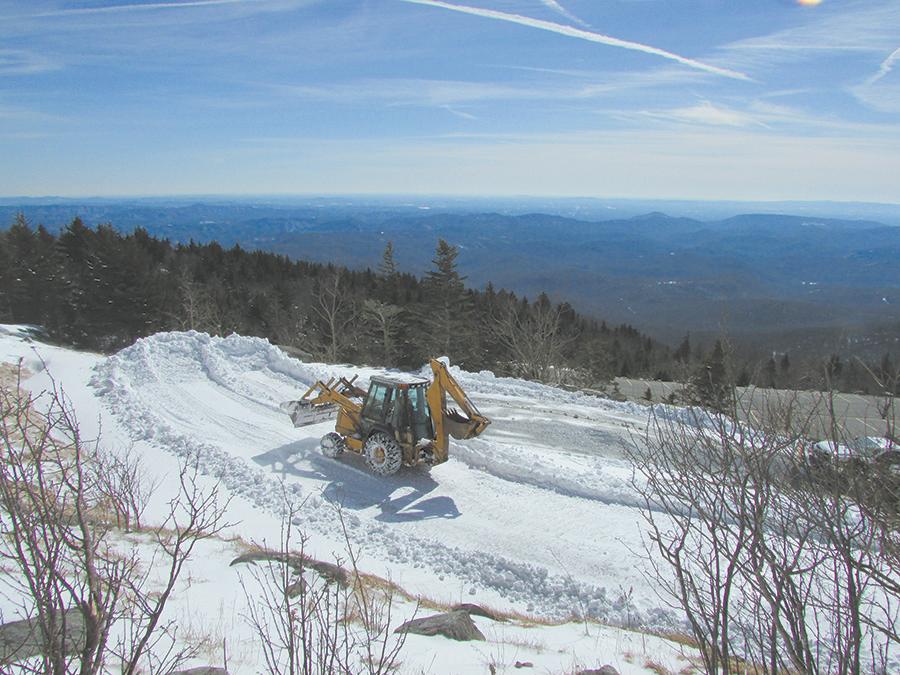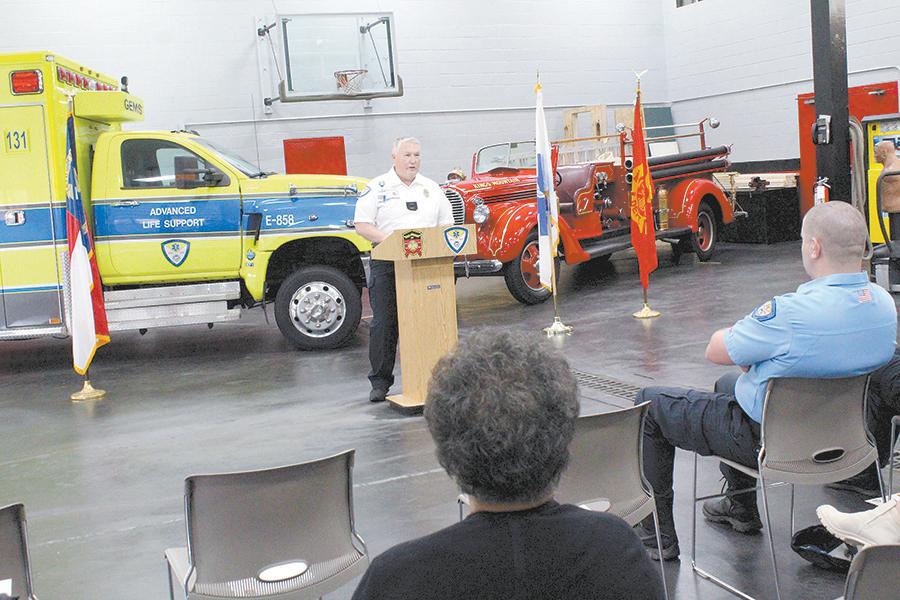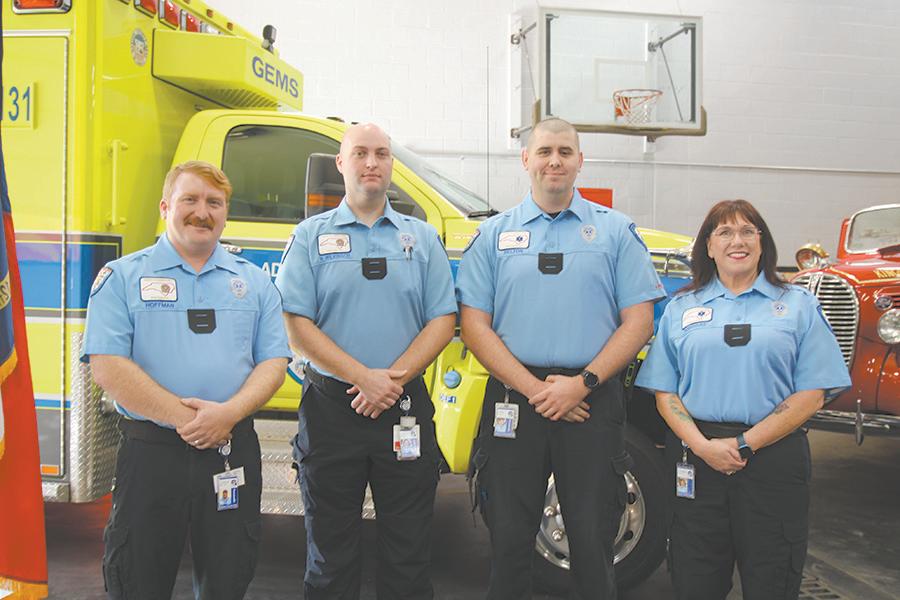
8 minute read
Shrine Club News
Eighteen Nobles and Ladies attended the installation of Noble Douglass B. Garland as Potentate of Oasis Shriners on Jan. 7, 2023. The event was held at Oasis Shrine Center in Charlotte. Garland became the 128th Potentate of Oasis.
The event was a celebration of the new Potentate, but also a celebration of the accomplishments of the Cherryville Shrine Club in 2022. The Club raised more than $4,000 last year for the Shriner’s Hospital for kids. It also provided the opportunity for the club to plan for the 2023. A few great ideas were proposed by the nobles and their ladies.
Here is a synopsis of some of the projects on the agenda for 2023. The club has a grill raffle going on as we speak. The Weber Gas Grill drawing will be June 21. To purchase a raffle ticket see a Shriner (this is a club project).
Cherryville Shriner Club will also have a Golf Tournament this year and all proceeds will go the hospital. In May, Oasis and Cherryville Shrine will have their annual paper sale, with the proceeds going to the hospital as well.
Summer brings us to our Benelli Shotgun raffle, which is a club project. September brings our knife sale; these are Rada cutlery and kitchen accessories. These make wonderful Christmas gifts. The club is sponsoring a Second Harvest Food Truck on April 3, in our community. This is a way our club can give back to a community we all truly love and appreciate. This is just the tip of the iceberg of things to come in 2023. There will be more to come in the coming months. The next time you see us with our badge of honor on (our red fez), just know that everything we do is for the kids.
We believe that Shriners are trying to change the world, one child at a time.
Grandfather
From Page 1 rugged mountains in the Eastern U.S. – is at its most extreme, and park staff must be prepared to encounter a variety of conditions.
Many significant weather records have been set on the mountain during the colder months. Grandfather Mountain has been providing daily weather observations from the top of the mountain since August 1955. The highest winds of the year are experienced in winter, with the current record gust set at 124 mph on Feb. 25, 2019. In addition, the coldest temperature recorded on the mountain is minus 32 degrees Fahrenheit on Jan. 21, 1985.
Grandfather has seen the extremes of 24 inches of snow in one day (March 16, 1993), 55.06 inches of snow in one month (January 1977) and 128.71 inches of snow in a winter (1959-1960).
The arctic blast that hit a large portion of the country at Christmas 2022 brought frigid temperatures to the mountain. Dec. 23, 2022, saw a low temperature of minus 17 degrees and a wind chill of minus 54.2 degrees, and Christmas Eve brought a low of minus 18.2 degrees and a wind chill of minus 56.8 degrees.
Grandfather Mountain is open, weather permitting, in the winter – and while the majority of winter days at the park can be quite pleasant, the extreme-weather days require a lot of extra preparation and work from staff.
Maintenance Staff

Grandfather’s maintenance staff, along with park operations staff, is responsible for evaluating the mountain each day in winter to check conditions, determine the park’s opening status and do any needed removal of ice and snow.
In a single season, the maintenance crew pours anywhere from 12 to 18 tons of road salt to keep the roadways free of ice and safe to drive on for the mountain’s staff and guests. This does not include an extra 1,000 pounds of salt put on the walkways and habitat paths. With the addition of the Wilson Center for Nature Discovery’s new concrete side- walks with animal-paw-print designs, the maintenance crew had to find a material that works like salt but won’t damage the new concrete, is environmentally friendly and can work in Grandfather’s extreme elements.
In winter, it’s not uncommon for park staff to head to the Mile High Swinging Bridge with brooms in tow to sweep ice away after a rime ice event. After snowstorms at Grandfather, vehicles are fitted with snowplows to clear the road and allow access to the top of the park. For deep snows, a snowblower comes in handy to blow the heavy snow off the roadways rather than have it piled up on the side of the road. The crews stay ready since the mountain’s weather can change at a moment’s notice.

“Coming in day to day, you never know what the road conditions are going to be and how the mountain is going to look up top,” Gideon Hughes, maintenance manager for the Grandfather Mountain Stewardship Foundation, said. “One day the weather could start with rain, turn cold and then transition to freezing rain, and then we have to work quickly to get everything salted. You never know what’s going to happen in winter on Grandfather.”
Animal habitats
For the mountain’s animal habitat keepers, winter preparations begin months in advance as they ready the resident black bears for their winter slumber. This includes carefully monitoring the bears’ diets and gradually increasing their fat supply in late summer and early fall, before limiting their food during winter, a process that mimics the natural fluctuations a bear would experience in the wild. Grandfather’s bears go into a state of torpor, or light sleep, in the winter.
“The bears do not go through a typical hibernation, per se,” Christie Tipton, animal habitats curator for the Grandfather Mountain Stewardship Foundation, said. “It is not uncommon to see one of the bears sleepily wandering around the habitat during the winter, whereas the otters are actually more active in the winter and sometimes like to dig tunnels in their habitat after a snowfall.”
While the otters may enjoy the freezing temperatures, the harsh conditions can sometimes cause problems by freezing the animals’ water supply. Habitat staff keep this from happening by breaking up ice that may form over water sources inside the habitats and ensuring that lines that supply heat to these water sources remain operational.
No matter the conditions, Grandfather’s habitat staff has to ensure that the bears, elk, eagles, cougars and otters have access to food and water during the winter, even if the habitats are inaccessible by car and the keepers need to hike up the mountain in the snow or ice to get to the animals.
Weather reporting
While technology over the years has brought improved automated weather-reporting equipment to Grandfather Mountain, a number of park staff are still responsible for measuring and recording weather totals at the top of the mountain, Wilson Center for Nature Discovery and Entrance Gate. This sometimes means venturing out into extreme conditions to take a daily reading.
“We are very intentional about the weather measurements that are taken on the mountain and do everything in our power to take these observations at the same time every day, regardless of how extreme the weather may be, in order to maintain consistency in the data,” John Caveny, director of education and natural resources for the Grandfather Mountain Stewardship Foundation, said.
Staff tasked with recording the weather measure rain totals and snow depth in designated locations, calculate snow meltto-water equivalents and, at times, have to remove ice from weather equipment in order to keep it functional.
“High-wind events will often blow all of the snow off the designated site at the top of the mountain or cause rain totals to be misleading,” Caveny said. “By taking measurements at the bottom, middle and top of the mountain and comparing them to each other, we can get a big-picture view of how different the weather can be across these different gradients. Through the long-term collection of this data, we build a picture of what the specific climate of Grandfather Mountain is.”
Trails Mountain staff also maintain the park’s trail system to keep it accessible during the winter, although it is not uncommon for some of the rockier trails, such as Black Rock and the Grandfather Trail, to close due to the formation of ice.
Trail maintenance is a continual process on the mountain but picks up especially in the fall, considering that winter weather can wreak havoc on a trail when not monitored properly. If brush is not cleared and if drainage on a trail is not working properly, a trail could become inaccessible for months after the first snowfall or severe winter storm.
“If we don’t clean drainages well in the fall and make the necessary removals, then the winter destroys trails and makes them inaccessible,” H. Patton III, natural resource management specialist for the Grandfather Mountain Stewardship Foundation, said. “It’s work that requires continuous monitoring and upkeep.”
Hikers should be prepared to encounter ice any time the trails are open during the winter months and even into early spring.
Visiting Grandfather Mountain in the Winter
While the weather atop Grandfather is some of the most extreme and fast-changing in the Eastern U.S., between the periods of wind and snow, you’ll find many sunny days perfect for hikes and visiting the park.
The winter season is generally quieter, with more opportunities for magical mile-high experiences. Cold temperatures bring clearer views – and even the chance to see the Charlotte skyline more than 80 miles away on some days. The new Wilson Center for Nature Discovery offers the perfect place to warm up with a dozen interactive exhibits, a film about Grandfather’s history and ecology in an ADA-accessible theater and homemade soups, burgers and wraps at Mildred’s Grill. More tips for visiting in the winter can be found at www.grandfather.com/winter-visits.
In the winter, guests are encouraged to call (828) 7334337 or check www.grandfather.com before visiting the park to learn about the day’s conditions and opening status. While the staff works very hard to make the park accessible, there are days when all or portions of the mountain are closed because of adverse conditions.
Ems
From Page 1 Rd., two (2) housing subdivisions, and the I-85/US 74 interchange area.”
Chief Harmon spoke and noted he had envisioned a need for an EMS first response by his fire department.
“Chief Lamphiear and I began discussions a while back (September 2019) on the needs and plans for making our vision come about; to make it a reality,” said Chief Harmon. Harmon noted the response times in the Gaston County portion of Kings Mountain and the western Gaston County area had “…the longest EMS response time of anywhere in the county.”

To that end, Chief Harmon said Gaston County “…facilitated the implementation of the first responder program by providing radios and dispatch services for calls in Gaston County.”

He added that KMFD then began “…to respond to all medical emergencies in the Gaston County portion of the city in 2022.”

In the department’s media release, Chief Harmon also noted the primary reason for locating the new GEMS QRV at the KMFD station (which is just inside Cleveland County) are as follows: “1.) quick access to Canterbury Road industry and the housing developments of Linwood and Northwoods;
2.) quick access to I-85 northbound and the area of Exit 10; and 3.) addressing this area as the next longest EMS response time in Gaston County.”
Harmon continued, “Additionally, the City of Kings Mountain welcomes this partnership and will allow GEMS to room-in at no cost.”
The two entities both acknowledge they “enjoy a great relationship,” with it being noted in the media release that, “KMFD and GEMS have an excellent working partnership.”
It is further noted that, “The GEMS QRV is the next step in the expansion and enhancement of services to the resi- dents, visitors, industry, and taxpayers of Gaston County in this area.”
Chief Harmon, in referring to the KMFD first responder program, said the new GEMS QRV is, “…the icing on the cake.”
Chief Lamphiear thanked everyone for coming out as did Kings Mountain Mayor Scott Neisler, who also thanked Gaston County Manager, Dr. Kim Eagle and all the Gaston and Cleveland County dignitaries and officials present for the ceremony. Mayor Neisler also praised the men and women of the KMFD and GEMS for what they do to serve others.
Chief Lamphiear also noted the new QRV was “a bridge to the future” for KMFD and Gaston County.
Gaston County Commissioner Bob Hovis noted how “public safety is the number one priority for the county and its residents, adding it is Gaston County’s honor to place the new QRV at KMFD to serve the people in the county and the area.









